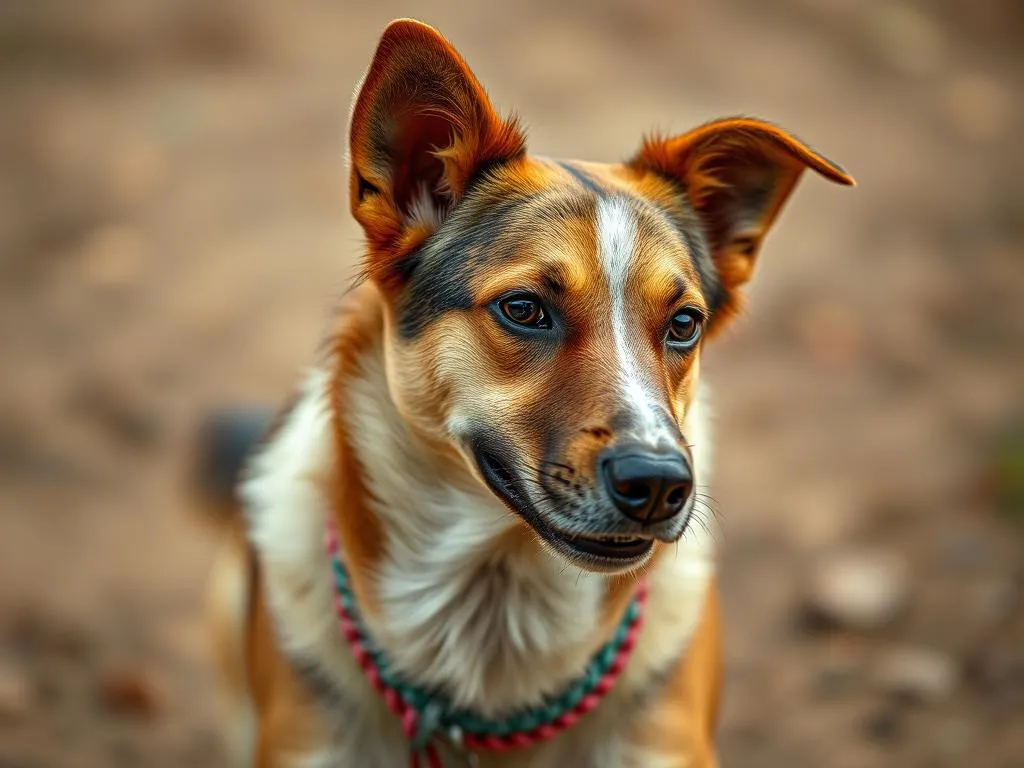
Introduction
Dog breeds play a significant role in our lives, offering companionship, protection, and a unique personality that can align with our lifestyles. Among the myriad of breeds, the Thai Bangkaew Dog stands out as a unique and culturally rich breed, cherished in its native Thailand for centuries. This article aims to provide comprehensive information about the Thai Bangkaew Dog, covering its characteristics, history, care needs, and much more. Whether you are considering adding this breed to your family or simply want to learn more, you will find valuable insights within.
Understanding Dog Breeds
Definition of Dog Breeds
A dog breed is a specific genetic lineage within the species Canis lupus familiaris, characterized by distinctive traits, behaviors, and physical attributes. Understanding these characteristics is essential for prospective dog owners as it helps in choosing a breed that fits their lifestyle and preferences. For instance, while some breeds are known for their companionship, others might excel as working dogs or guard dogs.
Overview of Popular Dog Breeds
Popular dog breeds like the Labrador Retriever, German Shepherd, and Golden Retriever have garnered attention for their friendly nature and adaptability. However, as we delve into the Thai Bangkaew Dog, we will discover how this breed offers a different experience, rich with cultural significance and unique characteristics.
The Thai Bangkaew Dog: An Overview
Origin and History
The Thai Bangkaew Dog has its roots in the Bangkaew village of Thailand. This breed is believed to be a mix between indigenous Thai dogs and foreign breeds, possibly including the Siberian Husky and the Akita. Historically, the Thai Bangkaew Dog was valued for its loyalty and protective instincts, making it a popular choice for guarding homes and livestock. Its significance extends beyond mere companionship; this breed has become an emblem of Thai canine culture.
Physical Characteristics
The Thai Bangkaew Dog is a medium-sized breed, typically weighing between 35 to 50 pounds (16 to 23 kg) and standing about 18 to 24 inches (45 to 60 cm) tall at the shoulder.
- Coat Type and Colors: This dog features a dense double coat that protects it from environmental elements. Coat colors can vary, with common hues being white, cream, brown, and black, often with striking markings.
- Distinctive Features: The breed is known for its bushy tail that curls over its back, erect triangular ears, and a broad head with a well-defined muzzle, giving it a dignified appearance.
Temperament and Behavior
The Thai Bangkaew Dog is known for its intelligence and loyalty. They are naturally protective of their families and can be reserved around strangers, making them excellent watchdogs.
- Common Personality Traits: This breed is typically confident, playful, and alert. They thrive on human interaction and enjoy being part of family activities.
- Interaction with Families and Children: The Thai Bangkaew Dog is generally good with children and can be quite playful, though supervision is necessary during interactions to ensure both child and dog are comfortable.
- Socialization Needs: Early socialization is crucial for this breed to ensure they are well-adjusted and friendly towards other pets and people.
Care and Maintenance
Diet and Nutrition
Proper nutrition is critical for the health and well-being of the Thai Bangkaew Dog. A balanced diet comprising high-quality dog food, rich in proteins and essential nutrients, is recommended.
- Recommended Dietary Needs: Adult dogs should receive two meals a day, while puppies may require more frequent feeding.
- Best Types of Food: Look for dog food formulated for medium-sized breeds, focusing on natural ingredients without fillers or artificial additives.
Exercise Requirements
The Thai Bangkaew Dog is an active breed that requires regular exercise to maintain its health and happiness.
- Recommended Daily Exercise Routine: Aim for at least 60 minutes of physical activity per day, which can include walks, playtime, and training sessions.
- Importance of Mental Stimulation: Mental exercises, such as puzzle toys and obedience training, are equally important to prevent boredom and destructive behavior.
Grooming Needs
Maintaining the Thai Bangkaew Dog’s coat is essential for its health.
- Coat Maintenance and Grooming Frequency: Regular brushing, at least once a week, will help reduce shedding and keep the coat healthy. During shedding seasons, more frequent grooming may be necessary.
- Bathing and Hygiene Considerations: Bathing should be done as needed, typically every few months. Regular dental care and nail trimming are also important aspects of grooming.
Health Considerations
Like all breeds, the Thai Bangkaew Dog can be prone to certain health issues.
- Common Health Issues in the Breed: Potential health concerns include hip dysplasia, skin allergies, and obesity. Regular veterinary check-ups can help catch these issues early.
- Recommended Veterinary Care and Preventive Measures: Ensure vaccinations are up to date and discuss a preventive care plan with your veterinarian, including flea and tick prevention.
Training the Thai Bangkaew Dog
Importance of Early Training
Early training and socialization are crucial for the Thai Bangkaew Dog to develop into a well-rounded adult.
- Benefits of Socialization and Training: Proper socialization helps them interact well with people and other animals, reducing the likelihood of behavioral issues.
- Recommended Training Methods: Positive reinforcement techniques, such as treats and praise, work best with this intelligent breed.
Obedience Training
Teaching basic commands is essential for the Thai Bangkaew Dog to ensure they are well-behaved.
- Techniques for Teaching Basic Commands: Use consistent commands and reward-based training to encourage compliance.
- Tips for Addressing Behavioral Issues: Address any behavioral problems promptly with patience and understanding, seeking professional help if necessary.
Advanced Training
For those looking to engage their Thai Bangkaew Dog further, advanced training can provide additional challenges.
- Agility and Other Advanced Training Options: Many dogs of this breed excel in agility courses and obedience trials, providing both physical exercise and mental stimulation.
- Mental Enrichment Activities: Activities such as scent work or trick training can also help keep their minds sharp.
Living with a Thai Bangkaew Dog
Ideal Environment
The Thai Bangkaew Dog thrives in environments where they can be active and engaged.
- Best Living Situations: While they can adapt to apartment living, a house with a secure yard is ideal to allow for ample exercise and play.
- Importance of a Secure Outdoor Space: A secure area is vital, as these dogs can be territorial and may chase after small animals.
Compatibility with Families
This breed is generally well-suited for families.
- Suitability for Families with Children: The Thai Bangkaew Dog is playful and protective, making them a good companion for children, provided they are properly socialized.
- Adaptability to Other Pets: With early socialization, they can get along with other pets, though supervision is recommended during initial interactions.
Potential Challenges
Owning a Thai Bangkaew Dog can come with its own set of challenges.
- Behavioral Quirks and How to Manage Them: Their protective instincts may lead to barking at strangers or guarding behavior, which can be managed through training and socialization.
- Understanding Their Protective Instincts: Recognizing and respecting their protective nature is essential while ensuring they are well-adjusted and not overly aggressive.
Adoption and Breeding
Finding a Thai Bangkaew Dog
If you’re considering adding a Thai Bangkaew Dog to your family, it’s important to find a reputable source.
- Reputable Breeders vs. Adoption Options: Research breeders who prioritize health and temperament, or consider adopting from shelters that may have this breed.
- Important Questions to Ask When Considering Adoption: Inquire about the dog’s history, temperament, and health records to ensure a good match.
Responsible Ownership
Owning a Thai Bangkaew Dog demands a commitment to their specific needs.
- Commitment to Breed-Specific Needs: Understanding their exercise, grooming, and socialization needs is crucial for their well-being.
- Resources for Ongoing Education and Support: Engage with local breed clubs and online forums for support and knowledge on best practices in care and training.
Conclusion
The Thai Bangkaew Dog is a breed that embodies loyalty, intelligence, and a rich cultural heritage. Their unique traits, care needs, and protective instincts make them an exceptional companion for the right owner. By understanding and appreciating the unique characteristics of this breed, potential owners can make informed decisions about integrating a Thai Bangkaew Dog into their lives. Responsible dog ownership not only enhances the bond between pet and owner but also contributes to the appreciation of this remarkable breed.









